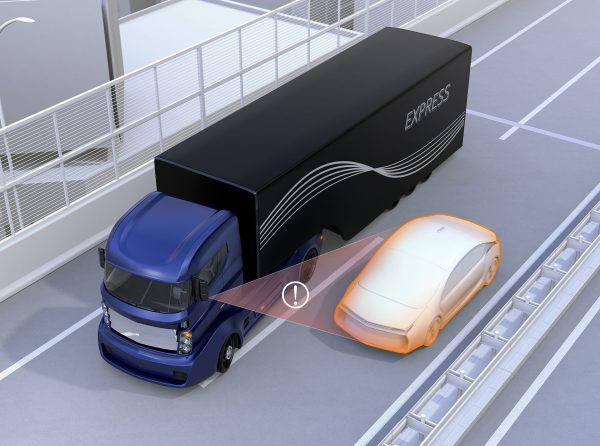What Is Direct Vision Standard (DVS)?
Direct Vision Standard (DVS), a pioneering initiative, has become a buzzword in the realms of transportation and road safety. But what exactly is DVS, and why is it garnering such attention?
At its core, DVS is a groundbreaking policy aimed at reducing road accidents and enhancing the safety of all road users, particularly in bustling urban environments.
This standard, which primarily concerns heavy goods vehicles (HGVs), marks a significant shift in how vehicle safety is approached.
As we delve deeper into this subject, we will explore not only the technical aspects of DVS but also its far-reaching implications for drivers, vehicle manufacturers, and, crucially, vulnerable road users.
As we peel back the layers of the Direct Vision Standard, it’s important to understand its genesis and its crucial role in modern transportation. DVS isn’t just another regulation; it’s a proactive step towards creating safer streets.
The standard’s focus on direct vision – the unaided sight a driver has from their cab – sets it apart from previous safety measures. This approach recognises that improved direct vision can significantly reduce the risk of accidents.
In this discussion, we will uncover the nuances of DVS, its importance in the current transportation landscape, and how it is reshaping the safety norms for heavy vehicles on our roads.
Background of DVS
The inception of the Direct Vision Standard can be traced back to the increasing concern over road safety in urban areas, particularly involving heavy goods vehicles.
Historically, HGVs have been implicated in a disproportionate number of accidents, often with devastating consequences.
The DVS emerged as a response to this challenge, crafted by transportation experts and regulatory bodies with a vision to make city streets safer.
This was not just a response to a growing problem but a forward-thinking solution that would set a new benchmark in vehicle safety standards.
In contrast to traditional vehicle safety measures, which often focus on protective gear or technological add-ons, DVS adopts a more holistic approach.
It emphasizes the need for improved visibility directly from the vehicle cab, thereby addressing the root cause of many accidents involving HGVs.
By setting clear, measurable standards for visibility, DVS has carved out a niche in vehicle safety regulation.
This shift not only underscores the importance of direct vision in preventing accidents but also heralds a new era in which the design of commercial vehicles is fundamentally aligned with road safety principles.
Understanding DVS
At its core, the Direct Vision Standard hinges on the principle that drivers should have as clear and unobstructed a view of their surroundings as possible.
This is quantified through a ‘star rating’ system, where vehicles are rated based on how much a driver can see directly through their cab windows without the use of cameras or mirrors.
The ratings range from zero (poor direct vision) to five stars (excellent direct vision). This system provides a clear, straightforward metric for assessing and improving vehicle design in terms of visibility.
Understanding DVS also involves recognising its specific requirements. Vehicles that fall below a certain star rating are required to compensate by installing additional safety features, such as sensors or cameras.
This requirement ensures that even vehicles with inherent design limitations can still operate safely in urban environments. By adopting this standard, fleet operators and vehicle manufacturers are compelled to prioritise direct vision in their designs, leading to a new generation of safer, more road-friendly HGVs.
Importance of DVS
The significance of the Direct Vision Standard in enhancing road safety cannot be overstated. By focusing on direct vision, DVS addresses a critical gap in road safety measures – the driver’s ability to see vulnerable road users like pedestrians and cyclists.
In busy urban settings, where such users frequently interact with heavy vehicles, improving direct vision can dramatically reduce the risk of fatal accidents. This is particularly crucial given the high stakes involved in HGV-related accidents, which often result in serious injuries or fatalities.
Moreover, the implementation of DVS marks a vital shift in how vehicle safety is perceived. It moves away from a reactive approach—where safety measures are added after a vehicle’s design is complete—to a proactive approach that integrates safety right from the design stage.
This paradigm shift not only benefits drivers but also sends a strong message about the collective responsibility towards road safety. It encourages a more comprehensive understanding of what constitutes a safe vehicle, going beyond traditional metrics and fostering a culture of safety that benefits all road users.

Conclusion
In conclusion, the Direct Vision Standard represents a significant leap forward in the quest for safer roads. By prioritising direct vision, DVS not only addresses a critical aspect of vehicle safety but also heralds a new era in vehicle design and urban planning.
As we embrace this standard, we move closer to a future where road accidents, particularly those involving heavy vehicles, become increasingly rare. The journey towards this future requires commitment, innovation, and a shared vision of safety for all road users.
As we reflect on the implications of DVS, it’s clear that this standard is more than a regulatory requirement; it’s a catalyst for change. It challenges us to rethink our approach to vehicle safety and to innovate towards solutions that protect not just the driver but every road user.
The Direct Vision Standard is not just a policy; it’s a promise – a promise of safer streets, safer vehicles, and a safer future for everyone.
Share this
What you need to know
CLICK HERE to view larger video
Certifications





Latest News
Start Your Enquiry
Fill out the details below to start an enquiry:
Stay in the Loop
To receive information about courses and special offers that can save you money, please add your details here.

